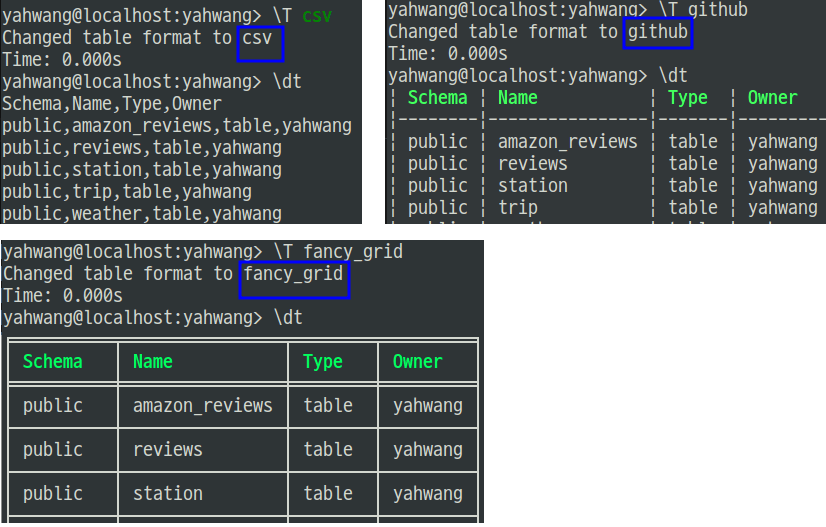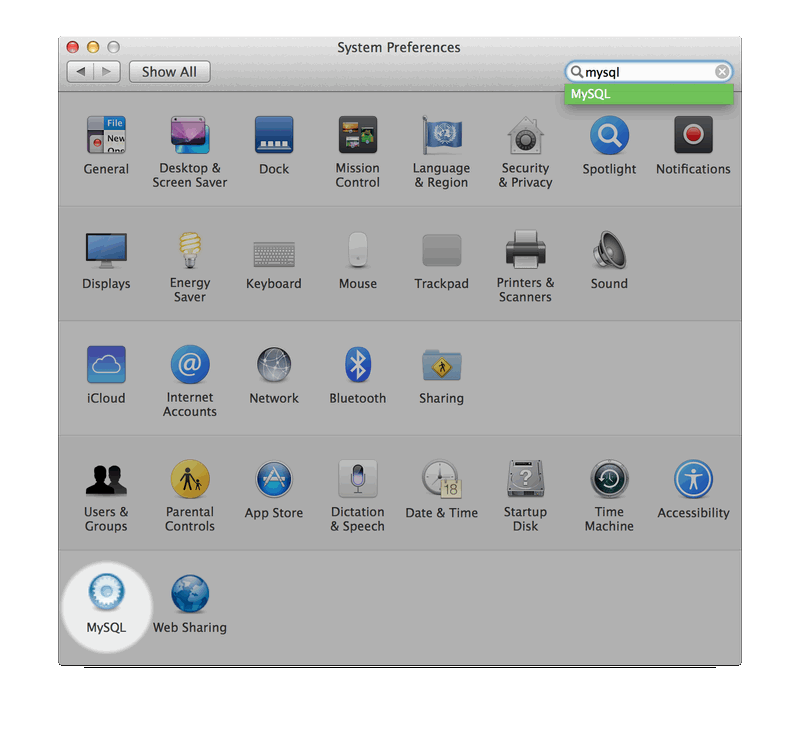Table of Contents
Computer terms from the software category. Internet Terms Hardware Terms Software Terms Technical Terms File Formats Bits and Bytes Tech Acronyms. This chapter describes how to obtain and install MySQL. A summary of the procedure follows and later sections provide the details. If you plan to upgrade an existing version of MySQL to a newer version rather than install MySQL for the first time, see Section 2.11, “Upgrading MySQL”, for information about upgrade procedures and about issues that you should consider before upgrading. This command lets you uninstall an Android application, where the argument given to the uninstall command is the root package name of the app: $ adb uninstall com.devdaily.fptracker (Here’s a little more information about using the Android adb uninstall command.) Finally, use this adb command to start SQLite, giving it the name of your database.
- Then MySQL is waiting for you to terminate a string with a quote or a query with a semi-colon. Here's how to tell MySQL to cancel your messed-up unterminated query and put you back to the main prompt: c I think this is safer than terminating and running your unintended query. After this, you should be back to the prompt and can exit with: exit.
- We would like to show you a description here but the site won’t allow us.
Restart Mysql Mac Command Line
- 2.1 General Installation Guidance
- 2.1.1 Supported Platforms
- 2.1.2 Which MySQL Version and Distribution to Install
- 2.1.3 How to Get MySQL
- 2.1.4 Verifying Package Integrity Using MD5 Checksums or GnuPG
- 2.1.5 Installation Layouts
- 2.1.6 Compiler-Specific Build Characteristics
- 2.2 Installing MySQL on Unix/Linux Using Generic Binaries
- 2.3 Installing MySQL on Microsoft Windows
- 2.3.1 MySQL Installation Layout on Microsoft Windows
- 2.3.2 Choosing an Installation Package
- 2.3.3 MySQL Installer for Windows
- 2.3.4 Installing MySQL on Microsoft Windows Using a
noinstallZIP Archive - 2.3.5 Troubleshooting a Microsoft Windows MySQL Server Installation
- 2.3.6 Windows Postinstallation Procedures
- 2.3.7 Windows Platform Restrictions
- 2.4 Installing MySQL on macOS
- 2.4.1 General Notes on Installing MySQL on macOS
- 2.4.2 Installing MySQL on macOS Using Native Packages
- 2.4.3 Installing and Using the MySQL Launch Daemon
- 2.4.4 Installing and Using the MySQL Preference Pane
- 2.5 Installing MySQL on Linux
- 2.5.1 Installing MySQL on Linux Using the MySQL Yum Repository
- 2.5.2 Installing MySQL on Linux Using the MySQL APT Repository
- 2.5.3 Installing MySQL on Linux Using the MySQL SLES Repository
- 2.5.4 Installing MySQL on Linux Using RPM Packages from Oracle
- 2.5.5 Installing MySQL on Linux Using Debian Packages from Oracle
- 2.5.6 Deploying MySQL on Linux with Docker
- 2.5.7 Installing MySQL on Linux from the Native Software Repositories
- 2.5.8 Installing MySQL on Linux with Juju
- 2.5.9 Managing MySQL Server with systemd
- 2.6 Installing MySQL Using Unbreakable Linux Network (ULN)
- 2.7 Installing MySQL on Solaris
- 2.7.1 Installing MySQL on Solaris Using a Solaris PKG
- 2.8 Installing MySQL on FreeBSD
- 2.9 Installing MySQL from Source
- 2.9.1 Source Installation Methods
- 2.9.2 Source Installation Prerequisites
- 2.9.3 MySQL Layout for Source Installation
- 2.9.4 Installing MySQL Using a Standard Source Distribution
- 2.9.5 Installing MySQL Using a Development Source Tree
- 2.9.6 Configuring SSL Library Support
- 2.9.7 MySQL Source-Configuration Options
- 2.9.8 Dealing with Problems Compiling MySQL
- 2.9.9 MySQL Configuration and Third-Party Tools
- 2.9.10 Generating MySQL Doxygen Documentation Content
- 2.10 Postinstallation Setup and Testing
- 2.10.1 Initializing the Data Directory
- 2.10.2 Starting the Server
- 2.10.3 Testing the Server
- 2.10.4 Securing the Initial MySQL Account
- 2.10.5 Starting and Stopping MySQL Automatically
- 2.11 Upgrading MySQL
- 2.11.1 Before You Begin
- 2.11.2 Upgrade Paths
- 2.11.3 What the MySQL Upgrade Process Upgrades
- 2.11.4 Changes in MySQL 8.0
- 2.11.5 Preparing Your Installation for Upgrade
- 2.11.6 Upgrading MySQL Binary or Package-based Installations on Unix/Linux
- 2.11.7 Upgrading MySQL with the MySQL Yum Repository
- 2.11.8 Upgrading MySQL with the MySQL APT Repository
- 2.11.9 Upgrading MySQL with the MySQL SLES Repository
- 2.11.10 Upgrading MySQL on Windows
- 2.11.11 Upgrading a Docker Installation of MySQL
- 2.11.12 Upgrade Troubleshooting
- 2.11.13 Rebuilding or Repairing Tables or Indexes
- 2.11.14 Copying MySQL Databases to Another Machine
- 2.12 Downgrading MySQL
- 2.13 Perl Installation Notes
- 2.13.1 Installing Perl on Unix
- 2.13.2 Installing ActiveState Perl on Windows
- 2.13.3 Problems Using the Perl DBI/DBD Interface
This chapter describes how to obtain and install MySQL. A summary of the procedure follows and later sections provide the details. If you plan to upgrade an existing version of MySQL to a newer version rather than install MySQL for the first time, see Section 2.11, “Upgrading MySQL”, for information about upgrade procedures and about issues that you should consider before upgrading.

If you are interested in migrating to MySQL from another database system, see Section A.8, “MySQL 8.0 FAQ: Migration”, which contains answers to some common questions concerning migration issues.
Installation of MySQL generally follows the steps outlined here:
Determine whether MySQL runs and is supported on your platform.
Please note that not all platforms are equally suitable for running MySQL, and that not all platforms on which MySQL is known to run are officially supported by Oracle Corporation. For information about those platforms that are officially supported, see https://www.mysql.com/support/supportedplatforms/database.html on the MySQL website.
Choose which distribution to install.
Several versions of MySQL are available, and most are available in several distribution formats. You can choose from pre-packaged distributions containing binary (precompiled) programs or source code. When in doubt, use a binary distribution. Oracle also provides access to the MySQL source code for those who want to see recent developments and test new code. To determine which version and type of distribution you should use, see Section 2.1.2, “Which MySQL Version and Distribution to Install”.
Download the distribution that you want to install.
For instructions, see Section 2.1.3, “How to Get MySQL”. To verify the integrity of the distribution, use the instructions in Section 2.1.4, “Verifying Package Integrity Using MD5 Checksums or GnuPG”.
Install the distribution.
To install MySQL from a binary distribution, use the instructions in Section 2.2, “Installing MySQL on Unix/Linux Using Generic Binaries”. Alternatively, use the Secure Deployment Guide, which provides procedures for deploying a generic binary distribution of MySQL Enterprise Edition Server with features for managing the security of your MySQL installation.
To install MySQL from a source distribution or from the current development source tree, use the instructions in Section 2.9, “Installing MySQL from Source”.
Perform any necessary postinstallation setup.
After installing MySQL, see Section 2.10, “Postinstallation Setup and Testing” for information about making sure the MySQL server is working properly. Also refer to the information provided in Section 2.10.4, “Securing the Initial MySQL Account”. This section describes how to secure the initial MySQL
rootuser account, which has no password until you assign one. The section applies whether you install MySQL using a binary or source distribution.If you want to run the MySQL benchmark scripts, Perl support for MySQL must be available. See Section 2.13, “Perl Installation Notes”.

Instructions for installing MySQL on different platforms and environments is available on a platform by platform basis:
Unix, Linux, FreeBSD
For instructions on installing MySQL on most Linux and Unix platforms using a generic binary (for example, a
.tar.gzpackage), see Section 2.2, “Installing MySQL on Unix/Linux Using Generic Binaries”.For information on building MySQL entirely from the source code distributions or the source code repositories, see Section 2.9, “Installing MySQL from Source”
For specific platform help on installation, configuration, and building from source see the corresponding platform section:
Linux, including notes on distribution specific methods, see Section 2.5, “Installing MySQL on Linux”.
IBM AIX, see Section 2.7, “Installing MySQL on Solaris”.
FreeBSD, see Section 2.8, “Installing MySQL on FreeBSD”.
Microsoft Windows
For instructions on installing MySQL on Microsoft Windows, using either the MySQL Installer or Zipped binary, see Section 2.3, “Installing MySQL on Microsoft Windows”.
For details and instructions on building MySQL from source code using Microsoft Visual Studio, see Section 2.9, “Installing MySQL from Source”.
macOS
For installation on macOS, including using both the binary package and native PKG formats, see Section 2.4, “Installing MySQL on macOS”.
For information on making use of an macOS Launch Daemon to automatically start and stop MySQL, see Section 2.4.3, “Installing and Using the MySQL Launch Daemon”.
For information on the MySQL Preference Pane, see Section 2.4.4, “Installing and Using the MySQL Preference Pane”.


Xampp Mac Start Mysql Command Line
Bitnami for XAMPP greatly simplifies the development of PHP applications on top of ApacheFriends XAMPP, by installing WordPress, Drupal with Drush, Joomla! and many more open source applications on top of XAMPP.
System Requirements
Bitnami XAMPP modules require either XAMPP or a Bitnami LAMP, MAMP or WAMP stack already installed. They can be used with XAMPP (installer or zip file) v1.7.4 or later on Windows, v1.8.1 or later on Linux, and v1.8.2 or later on Mac OS X.
Bitnami for XAMPP works properly on top of the portable version. Due to application requirements, once you install an application, you cannot move or rename your XAMPP directory.
Installation
Bitnami XAMPP modules require either XAMPP or a Bitnami LAMP, MAMP or WAMP stack already installed. They can be used with XAMPP (installer or zip file) v1.7.4 or later on Windows, v1.8.1 or later on Linux, and v1.8.2 or later on Mac OS X.
Run Mysql Mac Command Line
Ensure that the XAMPP MySQL server is running before beginning module installation.
During the installation process, you will be prompted for the XAMPP installation directory. The default installation directory is typically C:xampp on Windows, /opt/lampp on Linux and /Applications/XAMPP on Mac OS X.
Bitnami for XAMPP modules require the MySQL root password to create the application databases. The default XAMPP password for the MySQL root account is an empty string. If you have changed this password, you will be prompted for it during the module installation process.
File Locations
Bitnami applications will be installed within your XAMPP installation directory, in the apps/ subdirectory. All the applications are configured with their files in the following locations:
- INSTALL-DIR/apps/APP-NAME/htdocs: Application files
- INSTALL-DIR/apache/conf/httpd.conf: Apache configuration file
- INSTALL-DIR/apps/APP-NAME/conf/httpd-prefix.conf (in previous versions, wordpress.conf): Apache configuration file for application
To access an application, browse to the URL http://localhost/APP-NAME. For example, WordPress will be accessible at http://localhost/wordpress. You can also access applications from the XAMPP welcome page, under the 'Applications' tab.
Credentials
Administrator credentials for each application are configured from the installer. The default username is 'user' and the password is the one configured during the installation process.
Graphical Manager
Since XAMPP v1.8.2-beta2, XAMPP for Linux and Mac OS X ship a new graphical manager, as shown below:
You can also continue using the regular /opt/lampp/lampp script from the command line on Linux, as shown below:
Shell
Some applications include a command-line scripting tool, such as Drush for Drupal. Access these command-line tools from the XAMPP Shell, included with XAMPP for Windows.
